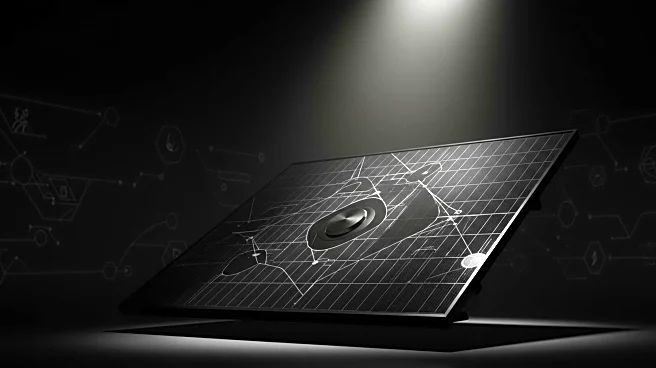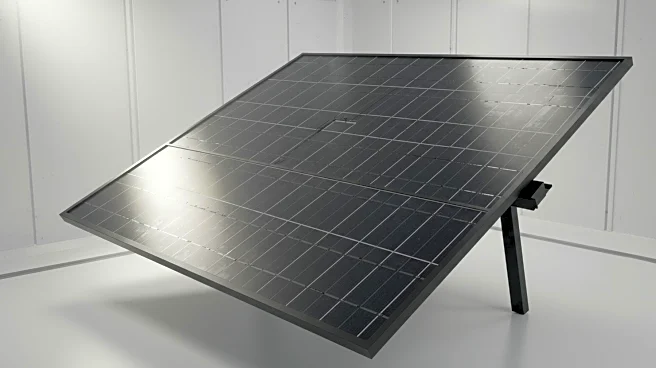What's Happening?
Researchers have developed a new design for solar thermoelectric generators (STEGs) using black metal technology, significantly boosting their efficiency. The innovation, led by Chunlei Guo, a material scientist at the University of Rochester, involves treating tungsten with femtosecond laser pulses to transform it into black metal. This material is optimized to absorb sunlight while minimizing heat losses. The design includes a 'mini greenhouse' effect by covering the treated tungsten with plastic to maximize heat trapping on the hot side, and a specially manufactured heat sink from aluminum to enhance cooling on the cold side. This approach allows the STEG to convert thermal energy into electricity more efficiently, achieving a power output 15 times greater than previous models. The research, published in Light: Science & Applications, demonstrates the potential of this technology to power microelectronic devices and smart sensors.
Why It's Important?
This advancement in solar power technology could have significant implications for the renewable energy sector. By increasing the efficiency of solar thermoelectric generators, this technology could provide a more viable and compact solution for powering small electronic devices and sensors, particularly in remote or off-grid locations. The ability to generate more power from the same amount of sunlight could lead to cost savings and increased adoption of solar energy solutions. Additionally, this innovation could contribute to reducing reliance on fossil fuels, supporting global efforts to combat climate change and transition to cleaner energy sources. The use of black metal technology in solar applications highlights the potential for advanced materials to revolutionize energy generation.
What's Next?
The next steps for this technology could involve scaling up the production of these enhanced STEGs and testing their performance in real-world conditions. Researchers may also explore further applications of this technology in various industries, such as agriculture and environmental monitoring, where autonomous sensors could benefit from efficient, renewable power sources. Additionally, collaboration with industry partners could facilitate the commercialization of this technology, making it accessible for broader use. Continued research and development could also focus on optimizing the materials and fabrication processes to further improve efficiency and reduce costs.











